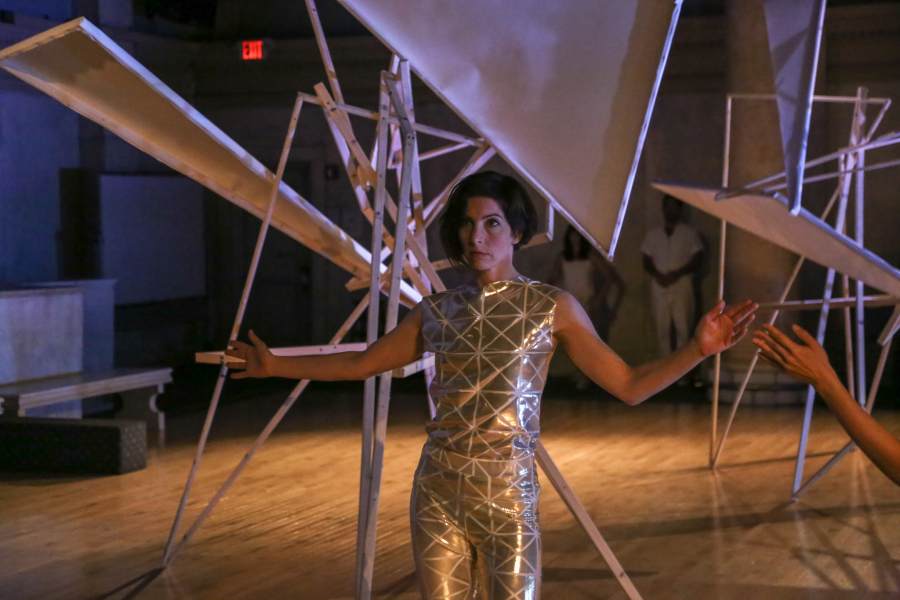

How do we experience the inevitable physical deterioration of our bodies, and does it haunt us? How do we respond to it, and how might it change us? Notably, our experience of that decay, as we strive, as we find ways to survive, is a corporeal one, and our spirit may continue to fight long after the body is no longer able. Also, importantly, it is a relative one: I only sense how sad my sagging, limp chest is when I see him over there looking so perked and great.
Laura Peterson, the choreographer behind Failure, an impressive work that had a short run at the legendary Judson Memorial, in her statement of the piece suggests that in response to this physical decline, we burrow into materialism and negativity. Because we no longer even resemble the mimetic image of ourselves — and not just physically, but intellectually or professionally or romantically or anything — we cling to literal and figurative objects that make up for the loss, and we resemble a life.
This thesis is persuasive, and I think possesses the compelling effect of seeming self-evident. But her dance, which is frankly more structural than theoretical, is truly about the sustainability and will of the physical body, and is less pessimistic than the overall concept. While the elements of the struggle that the statement suggests are certainly within the interpretive range of the work, more so, Failure expressed a quotidian grace, an appreciation of the good-fight of life. Yes, everywhere in life we bump up against our limitations, but that can be honorable, and can be fulfilling.
And it was lost on no one just how appropriate this tone of dance is at Judson, where Yvonne Rainer experimented with just this kind of movement years ago.
The work — physically taxing, wonderfully intuitive and structured — performs this quotidian grace by asking the dancers to repeat movements and move in similar sequences as they become more and more exhausted. As the performance moved along, we could see how a dancer fought to fulfill the movement they had done so effortlessly just a few minutes before, now with greater difficulty. Or how one performer landed with an umph and explosion while another landed with balance and balletic spring. We see different bodies doing the same movement, we see how some can do more than others, but we see how they all strive.
The strength of the piece is truly in the ensemble bits, the quintet work, when the dancers movement against and alongside each other carried a restless yet triumphant cohesion, a sense that we may be on our own but we’re all in this fight together. I cannot say with any certainty whether Peterson established an open, improvisational format or choreographed something more exacting, but the different rhythms of the movers, the shape and repetition of their movements, their spatial relationship: bonafide first rate work.
The work concluded with a form that really drilled the concept home, as the four dancers, I'm pretty sure pretty sincerely, competed to see who could dance the longest and stay onstage. The theoretical angles are everywhere — the games of our life! — but perhaps the most interesting aspect of it was the performance of the losers, who stood far upstage on a stage above the dancers. They were not condemned, they stood with elegance, even power, witnessing the rat race.
Some may be haunted by life, but no matter what, our consciousness of our limited bodies fuels are attitudes, is a source of our well being. Failure, by intention or not, displayed this with magnetic grace.